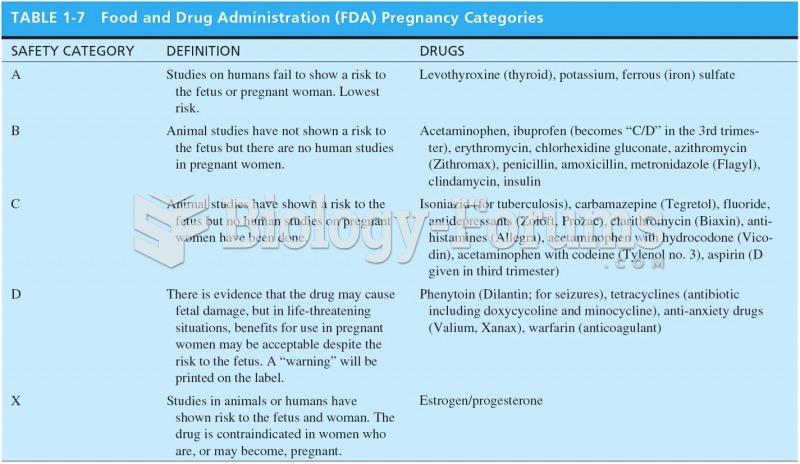Answer to Question 1
Correct Answer: 4
Rationale 1: Name, intended use, special considerations, and adverse effects alone do not give the nurse a complete understanding of the drug.
Rationale 2: Drug classification, contraindications, and adverse effects are important for the nurse to know. Gender considerations and cost of therapy are not always necessary to know before giving a drug.
Rationale 3: Drug classification, contraindications, special considerations, and severity of the adverse effects do not give the nurse all the information needed to protect the client during drug administration.
Rationale 4: Name, intended use, effects, contraindications, special considerations, and adverse effects give the nurse the information needed to safely administer the drug as ordered.
Global Rationale: Name, intended use, effects, contraindications, special considerations, and adverse effects give the nurse the information needed to safely administer the drug as ordered. Name, intended use, special considerations, and adverse effects alone do not give the nurse a complete understanding of the drug. Drug classification, contraindications, and adverse effects are important for the nurse to know. Gender considerations and cost of therapy are not always necessary to know before giving a drug. Drug classification, contraindications, special considerations, and severity of the adverse effects do not give the nurse all the information needed to protect the client during drug administration.
Answer to Question 2
Correct Answer: 3
Rationale 1: Inert ingredients can affect the bioavailability of a drug.
Rationale 2: Rate of absorption can affect the bioavailability of a drug.
Rationale 3: Safety margin will not affect the bioavailability of a drug.
Rationale 4: Tablet compression can affect the bioavailability of a drug.
Global Rationale: Safety margin will not affect the bioavailability of a drug. Inert ingredients, the safety margin, and the tablet compression can all affect the bioavailability of a drug.







